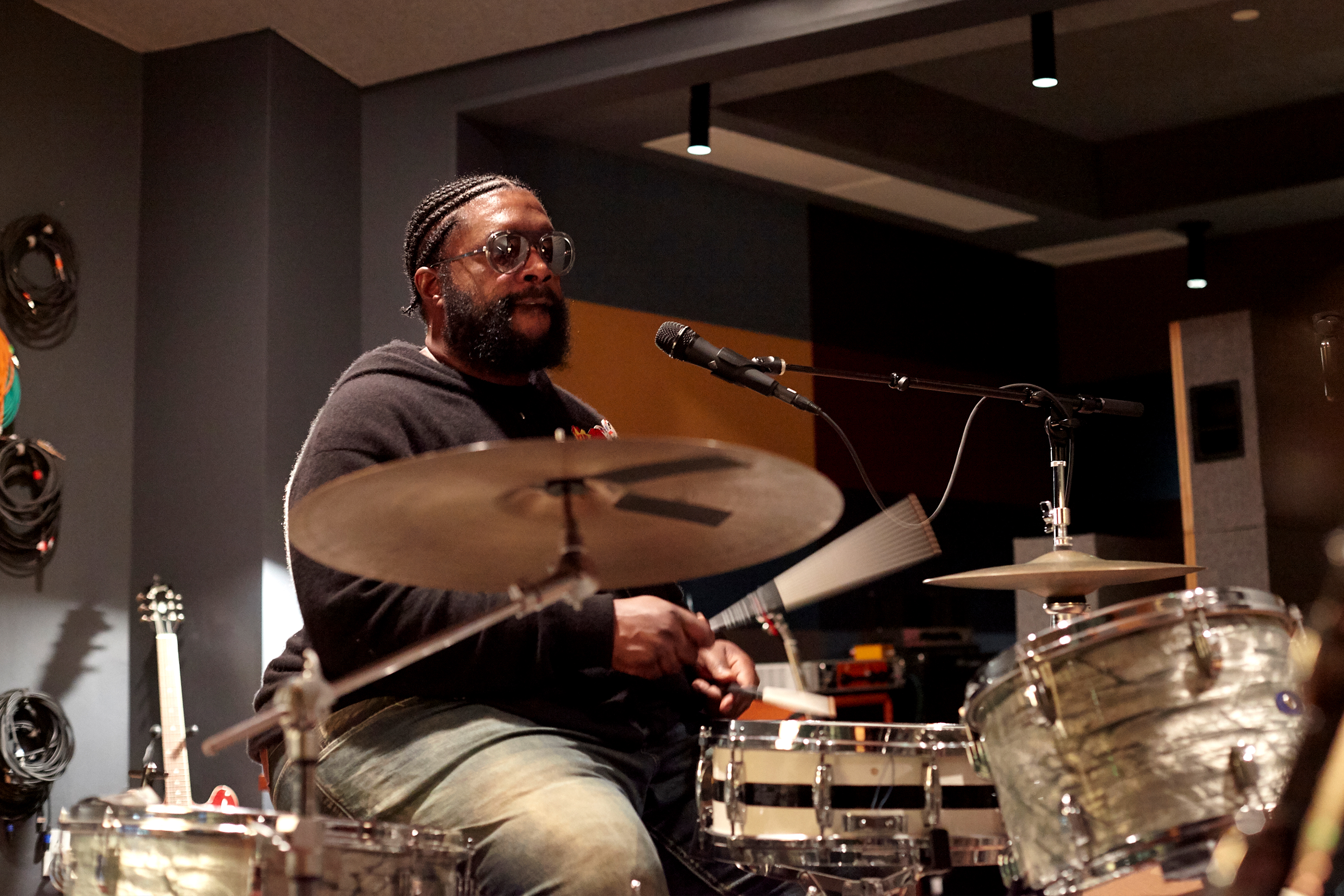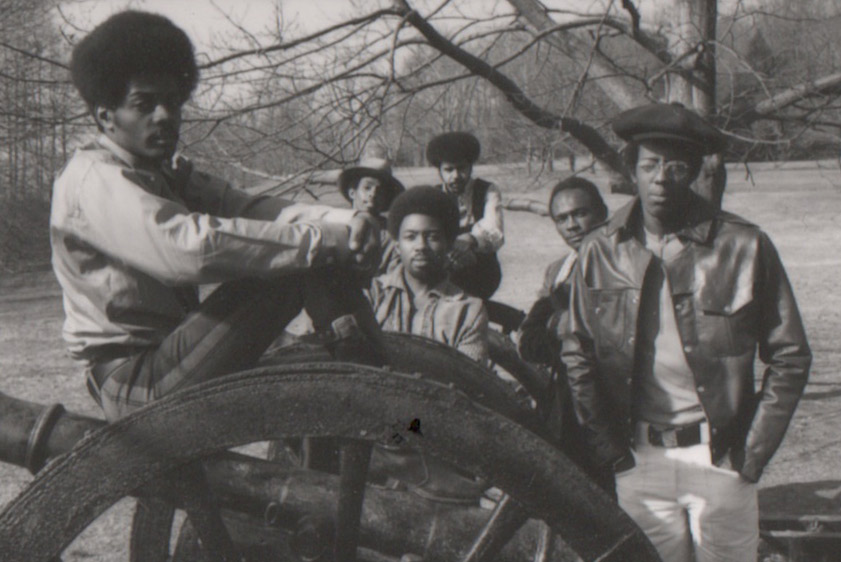Give the Drummer Some: Greg Webster, Ohio Players Drummer
J-Zone chats with the man who led the group through its early years
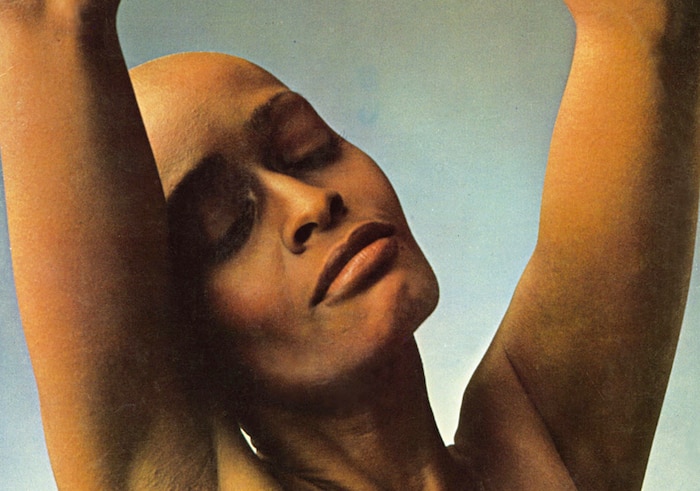
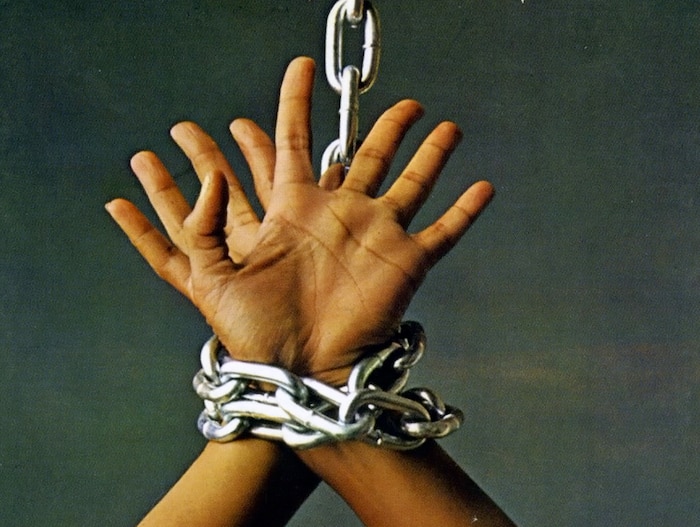
Before The Ohio Players could become the Buckeye State’s #1 chart-topping funk outfit of the mid-’70s (behind hits like “Fire” and “Love Rollercoaster”), their funk foundation had to be planted firmly. The band’s formative years in the prior decade saw the rigorous honing of its fashion, showmanship, musical chops, songwriting and chemistry. The seven-year period that preceded the smash hits also contained some of the funkiest, most heavily sampled and musically ambitious material in the band’s entire discography.
Now 78 years old and still residing in Ohio, Greg Webster, the original drummer and bandleader of The Ohio Players, is the group’s last surviving founding member. In the midst of promoting his newly re-released e-book, The Early Years/The Ohio Players, the sticksman took a phone call to discuss the band’s early years on the Ohio night club circuit and, of course, Pain and Pleasure, the cult classics hip-hop producers fell in love with decades after their release.
With bassist Marshall Jones’ unfortunate passing a month ago, guitarist Leroy “Sugarfoot” Bonner’s in 2013 and fellow founders Ralph “Pee Wee” Middlebrooks (trumpet) and Clarence “Satch” Satchell (sax, flute) both leaving us over 15 years ago, Greg Webster is now the lone authority on how funky The Ohio Players were before they became “Skin Tight.”
Coming out of the Dayton/Hamilton area of Ohio, what was in the air musically that inspired you early on? When did you start playing drums?
I started learning how to play when I was four years old. I used to bang on my mom’s pots and pans, trying to keep up with music on the radio. My first professional gig came when I was in sixth grade. My dad played in a band and one time the drummer didn’t show up. He knew I could keep rhythm so he told me to take brushes and keep rhythm all night on the [snare] drum. He gave me $6 and I knew I was a pro. [laughs]
The O’Jays were the only band The Ohio Players ever backed up.
Were you entirely self-taught? Who inspired you early on when developing your style?
I was until high school. I was in the school band and then I started taking lessons. [As for influences] the only one I was interested in was Louie Bellson. And when I began playing with different groups, I developed a thing for blues. [I liked] the way the back beat was. So when I was getting theory books and learning to read [music], I would take things like [double stroke rolls] and do them with the foot and hand, a combination. That’s how I developed the funk thing.
What about first professional gig behind an established artist? How old were you?
[Blues singer/guitarist] Lonnie Mack was one of the first. I had just gotten out of high school. When I got with Lonnie, our band did a lot of Chuck Berry, Elvis and Fats Domino. We also played country and western and would back up acts that came to town. I didn’t realize it until years later, but we played behind Johnny Cash, Roy Clark and Grandpa Jones before they got big.
After The Ohio Players formed, the band honed its musicianship by doing regular gigs on the local nightclub circuit. Talk a bit about some of those short-term engagements in the mid-’60s.
We started in Dayton, and then went to Canton and Cleveland early on. While we were in Canton, The O’Jays asked us if we wanted to go on the road with them and we backed them up for a year. The O’Jays were the only band The Ohio Players ever backed up.
The Ohio Players began releasing singles for Compass and Tangerine Records by 1967. The band also cut backing tracks for New York producer Johnny Brantley, who eventually produced your debut LP, Observations in Time, for Capitol in 1968. The early material isn’t even remotely similar to the later material the band recorded for Westbound or Mercury. It’s pretty standard soul and much less funky.
On Observations in Time, we had two singers, Dutch Robinson and Joe Harris. Joe went on to become the lead singer in Undisputed Truth. We had previously been in a heavy funk groove, but we were coming out of it because we had Dutch singing and he wasn’t really a funk singer.
Right. But from a drumming standpoint, two interesting cuts from that time period were “Mother In-Law” and “Alabama Soupbone,” the latter of which was an instrumental recorded around the time of that first album but not released until years later. “Alabama Soupbone” shows that transition in funk drumming that occurred in ‘67 or so. All that 16th note syncopation and left hand action helped define funk drumming.
I would try different patterns and things on the drums. I made a living doing that stuff with Lonnie Mack and when we had a guy named Bobby Brown singing with us [in the mid-’60s, prior to Dutch Robinson]. I’d play the quarter notes [on the hi-hat] and my left hand was loose enough to do all the [ghost notes] and still put the back beat on it. When we had Bobby, there were only two bands funkier than us: James Brown’s band and Little Richard and The Upsetters. The only thing I regret is nobody had a tape recorder back then. People wouldn’t believe what they were hearing, because songs like “Fire and “Skin Tight” were nowhere near as funky as what we were doing back then. I tried to take some of that funk drumming on when we had Dutch, but we really couldn’t get that type of thing going on Observations in Time.
Did any of your drumming peers of the time inspire you with all these styles of playing developing?
I didn’t get a chance to listen to other bands because I was the leader and manager of the group at the time. I was going out talking to club owners and trying to get jobs for us. But I had heard Bernard Purdie on a lot of records with Aretha, and then saw him play in person [in the studio] once. We had to run and get the fire extinguisher because man, he burnt up that studio. [laughs] He was something else! I was very impressed with him.
Pretty Purdie! Observations in Time didn’t do well commercially, and it’s almost like the band went back to the drawing board. Walter “Junie” Morrison joined the group on keyboards and vocals and the result was the “Pain” single in 1970. How did that come about?
We had signed [an album deal] with a company out of Akron and the agreement was they paid for the studio time and we split the royalties. I told the band I didn’t want any originals or instrumentals on the album. “Pain” was an instrumental that we used to open our shows with, and I used to play with a guy named John Thomas out of Cincinnati who had a record called “Heartbreak.” So while Junie was overdubbing vocals I told him I wanted something like heartbreak, pain or something like you were hurting – the first thing that came out his mouth was “pain.” He started making up the rest as it went through the music.
The pressing of the “Pain” single on Top Hit Records has a cover song on the b-side instead of breaking it into two parts like the Westbound pressing. I’ve always wondered about that pressing.
Right. I didn’t trust [the label]. “Pain” was the only original song on that [first version of the] album. [The single] had “Pain” on one side and [Creedence Clearwater Revival’s] “Proud Mary” on the other side. We were playing in New York and I went to do an interview with a radio station and they told me they couldn’t get the record out there. I had to call the [manufacturing plant] and they told me the records hadn’t been paid for by the label, so I told them “either you pay or we’re gonna take this album and shop it ourselves.” And that’s how we signed with Westbound.
Right. In 1970, Westbound signed three cutting edge bands with incredible musicians: Funkadelic, The Counts and you guys.
Since “Pain” was the only original song on the album, it was the only one Westbound would accept. Westbound had us go back in the studio and redo the Pain album with more original stuff.
I want to go into detail about the Pain album – the use of effects on your drums was pretty radical. On cuts like “The Reds” and “Singing in the Morning,” they’re steeped in reverb and stereo delay. Was that your idea?
That was the engineer. We just went and laid the tracks down and they went and messed it up.
On “Never Had A Dream” and “Singing In The Morning,” the grooves are so elastic and varied, yet the whole band is locked.
Take the voice off “Pain” and listen to how we move through different progressions. That’s the way we used to play on stage. At shows we used to do “Young Rabbits” by The Crusaders, as well as blues and funk stuff. The rest of the band would be playing straight but I’d be mixing it up back there – some parts I’d play funk, some parts I’d play jazz. As long as I kept the meter and the beat going, I could mix it up and play whatever was in my head.
Those subtle tempo changes and fluidity are almost unthinkable today because so much music is built around a click track or a grid. It’s almost like we see music rather than hear or feel it. Obviously you guys never used a metronome, but the ebb and flow was so tight – everyone was doing it together and the movement was constant.
Believe it or not, Junie orchestrated a lot of that [tempo change] stuff. He would keep us up to five o’clock in the morning in the studio! The difference between then and now as far as music is now when you go in the studio they give you a sheet of paper. Back then, nobody read music. Pee Wee and me were the only two who really read [in the original band]. But we would practice eight hours a day, so when we got there we knew exactly what to do. We practiced so much, that’s the difference between groups today and groups back then.
It showed. The music made during your tenure with the band wasn’t its highest charting, but it’s definitely its most heavily sampled.
People told me they were sampling our songs. I’ve got a grandson that would tell me, but I never heard it until just last year in a movie called Straight Outta Compton.
Yes. “Funky Worm.” That song has been sampled quite a bit – and that’s an understatement.
Yeah, that’s the first time I heard it.
“Never Had a Dream” has been sped up and sampled for its drum break numerous times. [plays drum break on 45 RPM over the phone to demonstrate]
[laughs] Wow! Man! I never heard it sampled or sped up, I just remember playing it.
How do you feel about that?
I never made any money from it. I never felt either way about it. I’m happy that they like our songs. If they like the way I play, that’s even better. I must’ve been pretty good if they want to sound like me! [laughs]
Even the way you tuned the toms high and with a little sustain on a cut like “Pride and Vanity” from the Pleasure LP; nobody dared use jazz tuning on an R&B record in 1972. Every drum had a pillow in it and sounded pretty deep and flat by that point. What was your approach to tuning? Do you remember how they miked up your set to get such a good sound in the studio?
The A&R at King Records in Cincinnati taught me how to tune my drums up when we were recording Observations in Time there. In the studio, they put one [microphone] on the snare, one in my bass drum and two overhead. I took the front head off the bass drum and left it wide open. I’d also take an inner tube from a tire and cut and fold it into a square, put a piece of cloth under it and tape it to the head where the beater hit, so I didn’t put holes in the head. I used to take the bottom heads off the toms, but I’d put masking tape on the top heads so they wouldn’t ring too much. Man, we did all kinds of stuff! [laughs]
You had to be very creative before moon gel, specialized heads and muffling rings! Do you remember how they recorded you or what type of set and snare were you using then?
Ludwig snare. I had a red Ludwig set on Observations in Time, but for Pain and Pleasure I had a Zickos set. They don’t even make them anymore. We’ve got the Funk Hall of Fame in Dayton and my drums are in there. They were oversized, with a 22” bass drum, 16” floor tom and 12” and 13” toms on top.
The Ohio Players songs always listed the entire band as writers. How were the songwriting duties split up?
When we signed with Johnny Brantley, I told everyone when we do a song everyone would be on there as a writer, even if you don’t do anything. There were some songs that were just Junie and Sugarfoot, others that were just Satch and Sugarfoot. I’d be there and listen and suggest things. Marshall and Pee Wee would always take off running somewhere, but they still got credit because they were part of the band. There was no one person getting sole credit, it was always a group thing.
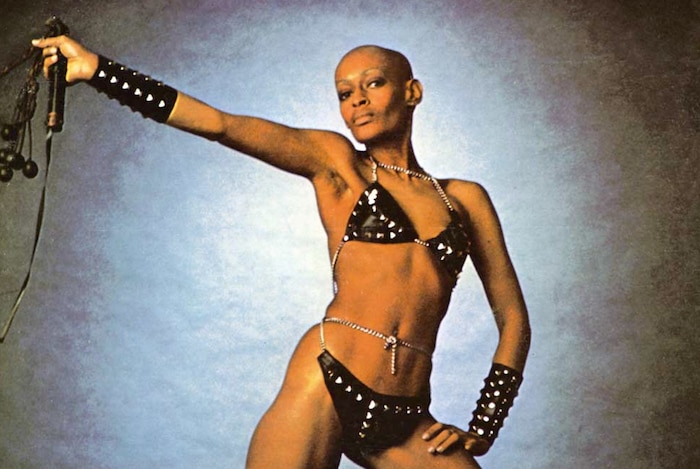
The band’s album covers are legendary, but I have to ask about your image. Coming from the ’60s protocol of suits and processed hair, The Ohio Players seemed to buck that trend the hardest and very early on. Sugarfoot is on Soul Train in 1971 with a round of bullets hung from his neck! These are not standard soul influences. You guys and Parliament definitely helped set the stage for black soul bands to be quirky and weird.
[In the ’60s] we wore suits like all the other bands, then one day Satch came up with the idea that we make our own uniforms in any style we wanted. We all agreed, but I said as long as they were certain color. So before a gig I’d call out a color and you’d have to wear that color, but the outfit could look like whatever you wanted it to look like. We’d look like we were in outer space; Funkadelic and some of the other groups came out and started doing the same thing. But we were the first ones that came away from uniforms and into a self-styled thing. People would come out just to see what we were gonna wear for our next show. [laughs]
No known video of your live show back then exists. What where highlights from your shows during this period?
We had a fellow with us named Dale Allen, who you hear on “Proud Mary.” He came after Dutch Robinson [ed. – after Dutch Robinson, but before the release of the Pain LP]. We were able to get back in our funk thing, because he could skate like James Brown. We were doing other people’s songs, like Isaac Hayes’ “By the Time I Get to Phoenix.” [On stage] Dale would be on the phone trying to call home to talk to his girlfriend, but her grandma would always answer the phone. That granny voice was Junie, and that’s the voice you hear on “Funky Worm.” The audience would just fall out!
You hear the granny voice in “Players Balling” on the Pain LP as well. But in the second half of 1972, the band recorded and released the Pleasure album. “Funky Worm” from that album was the first #1 R&B hit for The Ohio Players.
[laughs] We wanted “Pleasure” to be the next “Pain.” But we went in and did “Funky Worm” and the guy who owned the studio heard it being played back and said, “Fellas, that’s gonna be your big hit!”
You were the drummer, producer, manager, leader and elder statesman of the band from its formation through the completion of the Pleasure album. Just as things are taking off...
I went into the hospital [with hepatitis] and that’s when the band got [drummer James] “Diamond” [Williams]. Pee Wee came to the hospital and told me. He said, “I hate to be the one to tell you this, but they said they’re gonna keep Diamond because of the way he plays and he can sing. They’re gonna let you go.” That was it.
“The way he plays” meaning...
Matched grip. They were getting ready to go into that dance thing. Umm... What do they call that dance?
Disco?
Yeah, disco. I hadn’t gotten into that yet, I was still on the funk thing. Then they switched over to Mercury.
So your last days with the band...
We had struggled all that time with $600-$700 a night gigs. “Funky Worm” hadn’t come out yet; we were still working off “Pain.” “Funky Worm” came out, the offers from the booking agent increased to $20,000 a night. They [inadvertently] sent me the contract, but I had to send it back because I wasn’t with the group anymore.
The only regret I have is nobody had a tape recorder to capture how funky we really were.
Wow. After James “Diamond replaced you, what did you do musically? Did you take a break or just continue with other bands?
After I got out the hospital, I tried to play with a group called Overnight Low in Dayton. They pulled a trick on me because they wanted me to do the same thing for them that I did for The Players. I got them a booking and recording contract, and then they let me go because they claimed I wasn’t good enough to play with them anymore. I stopped playing for a year, and then I went to hear my dad play jazz. I liked what I heard and started playing jazz [in the ’70s and ’80s]. My jazz group won a few awards [locally], and I felt more relaxed playing jazz. They weren’t playing the funk like I used to play it. It was a different type.
On a final and somewhat sad note, bassist Marshall Jones passed away last month. Talk about that rhythm section with Marshall and yourself, considering it drove the whole band during your time with them.
Sometimes Marshall and I would go tit for tat and disagree on stuff, but when we would get to playing, we had a feeling, man. I liked the idea of double timing and Marshall would double time right along with me. We would have fun doing that type of stuff. I called him two weeks before he passed to check on him because he had Stage 4 cancer. I called back to make sure he was okay and nobody answered and then they told me he had passed.
You’re the last surviving member of the original band. What do you want the public to know about the early days of The Ohio Players?
Those were the days of golden. The only regret I have is nobody had a tape recorder to capture how funky we really were. We had crowds that couldn’t get in the door.
